- News
- Reviews
- Bikes
- Accessories
- Accessories - misc
- Computer mounts
- Bags
- Bar ends
- Bike bags & cases
- Bottle cages
- Bottles
- Cameras
- Car racks
- Child seats
- Computers
- Glasses
- GPS units
- Helmets
- Lights - front
- Lights - rear
- Lights - sets
- Locks
- Mirrors
- Mudguards
- Racks
- Pumps & CO2 inflators
- Puncture kits
- Reflectives
- Smart watches
- Stands and racks
- Trailers
- Clothing
- Components
- Bar tape & grips
- Bottom brackets
- Brake & gear cables
- Brake & STI levers
- Brake pads & spares
- Brakes
- Cassettes & freewheels
- Chains
- Chainsets & chainrings
- Derailleurs - front
- Derailleurs - rear
- Forks
- Gear levers & shifters
- Groupsets
- Handlebars & extensions
- Headsets
- Hubs
- Inner tubes
- Pedals
- Quick releases & skewers
- Saddles
- Seatposts
- Stems
- Wheels
- Tyres
- Health, fitness and nutrition
- Tools and workshop
- Miscellaneous
- Buyers Guides
- Features
- Forum
- Recommends
- Podcast
review
£29.99
VERDICT:
Capable rear light with decent modes and fast charging times
Relatively bright
Sensible choice of modes
Quick charging
Run-times aren't the longest
Weight:
23g
Contact:
At road.cc every product is thoroughly tested for as long as it takes to get a proper insight into how well it works. Our reviewers are experienced cyclists that we trust to be objective. While we strive to ensure that opinions expressed are backed up by facts, reviews are by their nature an informed opinion, not a definitive verdict. We don't intentionally try to break anything (except locks) but we do try to look for weak points in any design. The overall score is not just an average of the other scores: it reflects both a product's function and value – with value determined by how a product compares with items of similar spec, quality, and price.
What the road.cc scores meanGood scores are more common than bad, because fortunately good products are more common than bad.
- Exceptional
- Excellent
- Very Good
- Good
- Quite good
- Average
- Not so good
- Poor
- Bad
- Appalling
The Ravemen TR30M rear light has practical modes for most situations. In recent years, optical technology means lower lumens don't necessarily mean low power, and the TR30 is no exception. Run-times are on the moderate side, but it charges swiftly, which is convenient for office-bound commuting.
Specification
The lens and body are a see-through orange monocoque, which incorporates the hook for attaching to the seatpost clamp or clothing/luggage. Internally, it's engineered to project 360 degrees, sharpening output at key points.
It's fuelled by a 200mAh, 3.7V lithium-polymer battery. Lithium polymer cells have the advantage that they can be made to any shape and are lightweight yet resistant to impact trauma. That would be of little use if the other components aren't to a similar spec, but they are, and the light is reckoned to withstand drops of up to a metre.
> Find your nearest dealer here
The charge port is sensibly positioned up top, minimising if not eliminating the likelihood of it getting exposed to wet, gritty stuff.
There's an auto kick down, which is welcome, but this feature does not act as a 'reserve tank' so doesn't buy additional time, over those run times cited.
Mount
The articulated mount ensures the light can be adjusted for optimal positioning, so it doesn't project skyward or at your mudguard/tyre. It comes with a silicone shim and is compatible with round and aero seatposts, simply attaching with o-rings. While functional, it's relatively crude compared with those you get with Ravemen's CL05 and CL06 rear lights (full reviews to come), which are also articulated but have an integrated wraparound ladder-type strap.
The TR30's o-ring strap doesn't feel the most durable, and I have reservations regarding the adhesive shim's durability when it weathers. To be fair, nothing has gone wrong during the test period, but what does stand out to me is that, while the main unit is very well executed, the mount, though functional, feels as if it's been built to a price. As an aside, the TR30 light body will also fit on the CL series brackets.
The monocoque clip on the light fits into the mount securely, and also works well and very securely on a jersey pocket or slotted onto bikepacking luggage.
Switch and modes
The switch is a rubberised affair, with an integrated charge indicator positioned just below the Ravemen logo. Though rubbery it's still positive, so doesn't feel vague in full finger winter-weight gloves. I've had no incidents of unwanted engagement when it's been in a jersey pocket.
Press and hold for two seconds to turn the light on/off; single presses change modes. A memory function means it turns back on in the last mode used.
There are five modes: a 30-lumen flash, 20-lumen steady, 7-lumen steady, 2-lumen rapid flash, and 8-lumen pulse flashing.
Charging and run-times
The TR30 charges from a micro-USB cable, which is reliable enough but a little shorter than I'd like. Charge time is cited as a convenient 90 minutes and it was bang on in the real world from the mains. Tack on another 20 minutes from a laptop/similar third party technology.
Run-times are very faithful to those cited too. I've consistently cruised past the 2 hour mark using the 30-lumen flashing, 90 minutes from the 20-lumen steady, and 3 hours 8 minutes for low steady. Rapid flash came within 4 minutes of the 15 hours claimed, pulsing within 8 minutes of the 8 hours claimed. I've had no unwanted power-downs to date. It's pretty much what I'd expect these days, given the advances in battery technology, and it's worth noting that I had been riding in temperatures as low as -5°C.
Output
The TR30 has proved brighter than the lumens might suggest. The 30-lumen flashing is more than up to the job of unlit backroads. It produces a broad arc of light and the tempo is quick enough to nail attention. The translucent body certainly helps in terms of peripheral prowess, and when used as my solo rear light I felt reasonably secure.
Anecdotally, approaching traffic seemed to pick me out at 180 metres, when attached to seatpack or jersey pocket, which seemed to dip to 120-140 metres when seatpost or seatstay mounted.
It's probably overkill for urban work, if unlikely to test tempers or fry retinas. Friends reckoned they could spot me at 100-120 metres.
While its TR50 sibling's highest flashing mode will pass as a daylight runner, the TR30's doesn't. In fairness, its presence is reasonable on overcast days, but not bright, sunny ones.
The 20-lumen steady is another mode that covers most bases, albeit lacking the outright presence of a flashing of comparable power. There's enough bite for the backroads without being offensive at close quarters. Given competing illumination, friends reckon they could pick the light out at 70 metres or so; open roads 80-100 metres, depending on whether skies are cloudy or clear.
> Buyer’s Guide: 19 of the best rear lights for cycling
Group rides aside, the 7-lumen low steady wouldn't be my first choice along the lanes but could save your bacon if reserves were tumbling and you didn't want the light to take its kick down default. It was much better than I was expecting in suburban and semi-rural settings, too.
I also like the 8-lumen pulse flash. It's another mode that is brighter than numbers might imply and quite eye-catching along the lanes, and through more trafficked areas around dusk or gloomy afternoons. Anecdotally, it seemed to grab people's attentions at 60-70 metres, and by my reckoning the pulsing tempo is just slow enough not to grate at closer quarters.
It's a good default in the performance to economy stakes but a better choice for open roads. When used as my only rear light, the pulse pace was just a fraction too slow for some situations: joining the flow of traffic or exiting roundabouts, the pattern's momentary pauses left me feeling uncomfortably stealth.
The lowest flash is a viable option for limping home or tackling shared use paths, but other than that (or as a secondary light) I'd be going for a brighter mode.
Weatherproofing/durability
I've subjected the light to mucky lanes (without mudguards), extended douses with the hosepipe, and freezing temperatures. The TR30 hasn't missed a beat, despite the charge port's cover not being the best fit on our model.
Value
Competition is fierce at this price point, and though I wouldn't say the Ravemen is bad value, there are several offering higher outputs and longer run-times for the same money.
Fabric's Lumasense V2 also packs a maximum of 30 lumens but boasts a braking function too, for £29.99. (We tested a previous iteration back in 2016.)
Magicshine's Seemee 100 is very powerful, more sophisticated and a few quid cheaper, though some modes can be a bit thirsty and the braking function merits refinement.
Conclusion
The TR30 is a good choice for commuting and shorter training rides. It's particularly good for built-up areas but also gives out enough light for backroad blasts. The 360-degree visibility is reassuring, too, but I'd rather it came with the bracket you get with its CL siblings.
Verdict
Capable rear light with decent modes and fast charging times
road.cc test report
Make and model: Ravemen TR30M rear light
Size tested: 30 lumens max
Tell us what the light is for, and who it's aimed at. What do the manufacturers say about it? How does that compare to your own feelings about it?
Ravemen says: 'Crystal Pure Red Rear Light. Featuring transparent light body and special internal reflecting patterns, TR30 gives out 360 degree beam with max 30 LED lumens, providing much better rear and side visibility to increase rider's safety. It is lightweight, easy to use and versatile with quick release clamp mount.'
It's a capable light that's brighter than numbers alone would suggest.
Tell us some more about the technical aspects of the light?
Ravemen lists:
Dual Highly efficient LEDs with max 30 LED lumens
Transparent light body with 360-degree beam angle
Special internal reflecting patterns, enhancing the rear and side visibility and increasing rider's safety
Mounting angle adjustable for daily riding with max visibility or for group riding without dazzling following riders
Quick release design, compatible with round and aero seatposts
Micro USB charging port, compatible with most phone chargers
Built-in battery indicator and charging indicator
Intelligent memory circuit remembers the last used brightness level and mode when turned on again
Specifications
LED: Dual highly efficient LEDs
Battery: 200mAh/3.7V rechargeable Li-polymer battery
Dimensions: 25mm (L)*21mm (W)*62mm (H)
Weight: 22g
Mount Size: compatible with 24-36mm seatpost
Rate the light for quality of construction:
7/10
Light is well made, bike mount not quite up to the same standard, but functional.
Rate the light for design and ease of use. How simple was the light to use?
8/10
Rate the light for the design and usability of the clamping system/s
5/10
The articulated function ensures the light can be adjusted for optimal positioning, but though functional the mount is a more crude design than those used for Ravemen's CL05 and CL06 rear lights.
Rate the light for waterproofing. How did it stand up to the elements?
7/10
It has resisted being blasted with wet silty stuff along the backroads and has passed my garden hose test with flying colours.
Rate the light for battery life. How long did it last? How long did it take to recharge?
7/10
Run-times don't rival some models, but it's reliable and charges swiftly.
Rate the light for performance:
7/10
Brighter than numbers and diodes might imply, thanks to decent optics and design. Run-times are accurate and it charges quickly.
Rate the light for durability:
7/10
Light solidly made, bike mount not quite up to the same standard, though it's functional.
Rate the light for weight:
7/10
Rate the light for value:
5/10
Competition is fierce at this price point and there are several offering higher outputs and run-times. For the same price, Fabric's Lumasense V2 has a maximum flash of 30 lumens but also a 100-lumen braking function. Magicshine's Seemee 100 is also very powerful, more sophisticated and a few quid cheaper, though some modes can be a bit thirsty, and the braking function merits refinement.
Tell us how the light performed overall when used for its designed purpose
The clever optics and intuitive design mean the TR30 is bright enough for country lanes yet provides plenty of presence in the lower modes for town and group riding. Run-times favour commuting or middle distance training rather than endurance rides, but the TR30 charges quickly, which balances things out.
Tell us what you particularly liked about the light
Sensible modes, intuitive design and better presence than power outputs might suggest on paper.
Tell us what you particularly disliked about the light
Not a major gripe, but the mount doesn't feel as high standard as the light unit itself.
Did you enjoy using the light? Yes
Would you consider buying the light? Yes
Would you recommend the light to a friend? Yes
Use this box to explain your overall score
It's a decent light overall, tempered by a good but not great mount.
About the tester
Age: 47
I usually ride: Rough Stuff Tourer Based around 4130 Univega mtb Frameset My best bike is: 1955 Holdsworth Road Path and several others including cross & traditional road
I've been riding for: Over 20 years I ride: Most days I would class myself as: Experienced
I regularly do the following types of riding: cyclo cross, commuting, touring, fixed/singlespeed, mtb,
Shaun Audane is a freelance writer/product tester with over twenty-eight years riding experience, the last twelve (120,000 miles) spent putting bikes and kit through their paces for a variety of publications. Previous generations of his family worked at manufacturing's sharp end, thus Shaun can weld, has a sound understanding of frame building practice and a preference for steel or titanium framesets.
Citing Richard Ballantine and an Au pair as his earliest cycling influences, he is presently writing a cycling book with particular focus upon women, families and disabled audiences (Having been a registered care manager and coached children at Herne Hill Velodrome in earlier careers)
Latest Comments
- Destroyer666 2 hours 9 min ago
"...the beeswax-based covering magically shuns off whatever might be lurking in the corners. Even after multiple rides, when the bars rattled about...
- chrisonabike 3 hours 24 min ago
I've always wondered - why does the one-armed person in the cloak have their hand in the one-armed person with the cane?
- David9694 3 hours 32 min ago
t-boned
- Rendel Harris 4 hours 52 min ago
I didn't know the blue RA saddle was a holy grail - I had a 1986 RA bought new in 1987 with a blue saddle that lasted me very well until 2002 when...
- newbankgyratory 5 hours 2 min ago
Solution: Put these up everywhere. Source: https://www.gov.uk/guidance/the-highway-code/traffic-signs
- Rendel Harris 5 hours 59 min ago
Glad you like it - this week was the first proper commuting week since I got it, 250kms nice and warm but not boiled, indeed - and when the...
- Rendel Harris 7 hours 32 min ago
As what you have said is demonstrably untrue, given that the event is organised and has been for the last four years by a professional events...
- chrisonabike 8 hours 1 min ago
Accessibility issue. Of course by necessity / co- evolution the Dutch generally provide a fairly "one size fits standard bikes" parking solution -...
- Steve K 9 hours 16 min ago
I'm there now too, if anyone wants a follow/wants to follow me. @cyclingtheseaso
- Shepton 9 hours 51 min ago
I totally agree. I used to commute through Long Ashton and only started getting agro from motorists when the pavement was made to be a shared path....






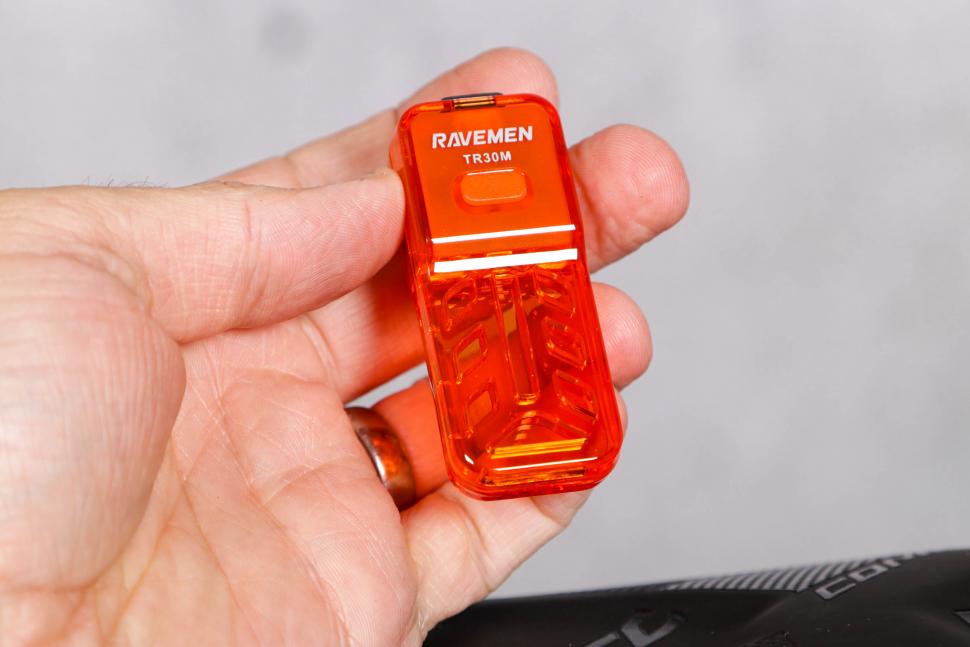
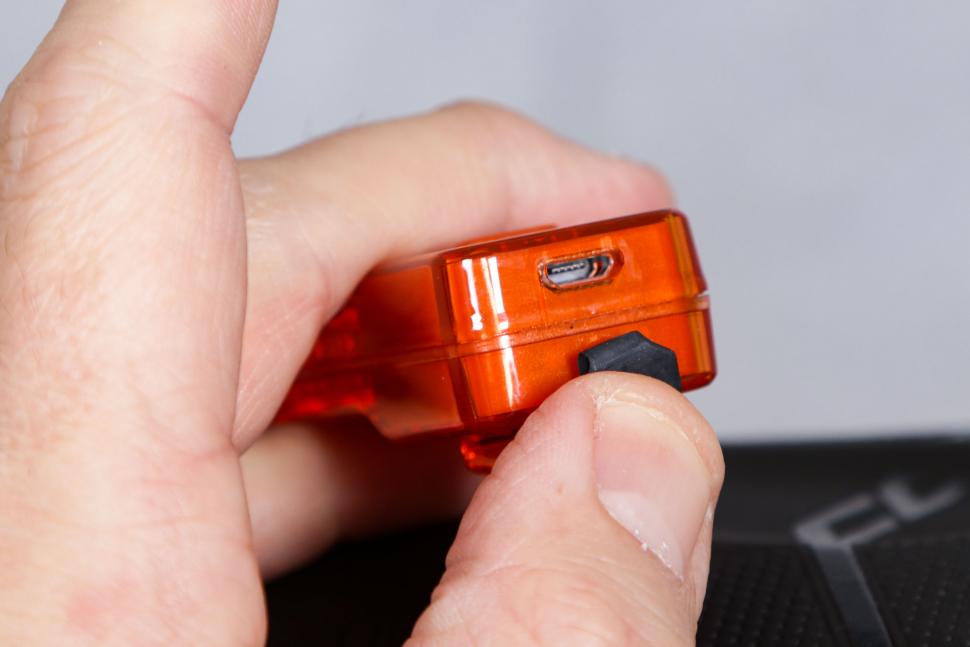
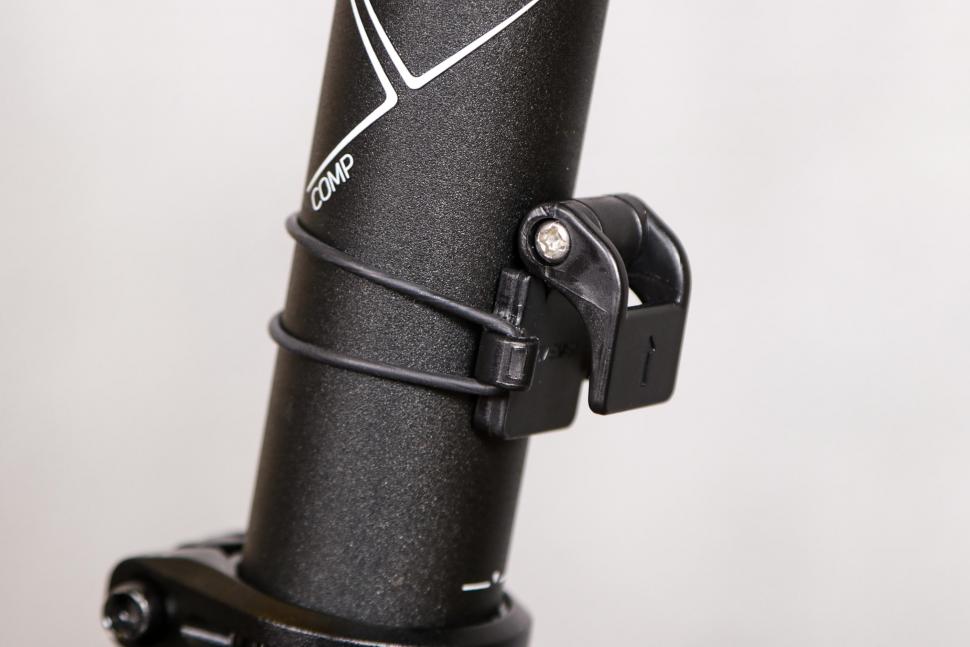

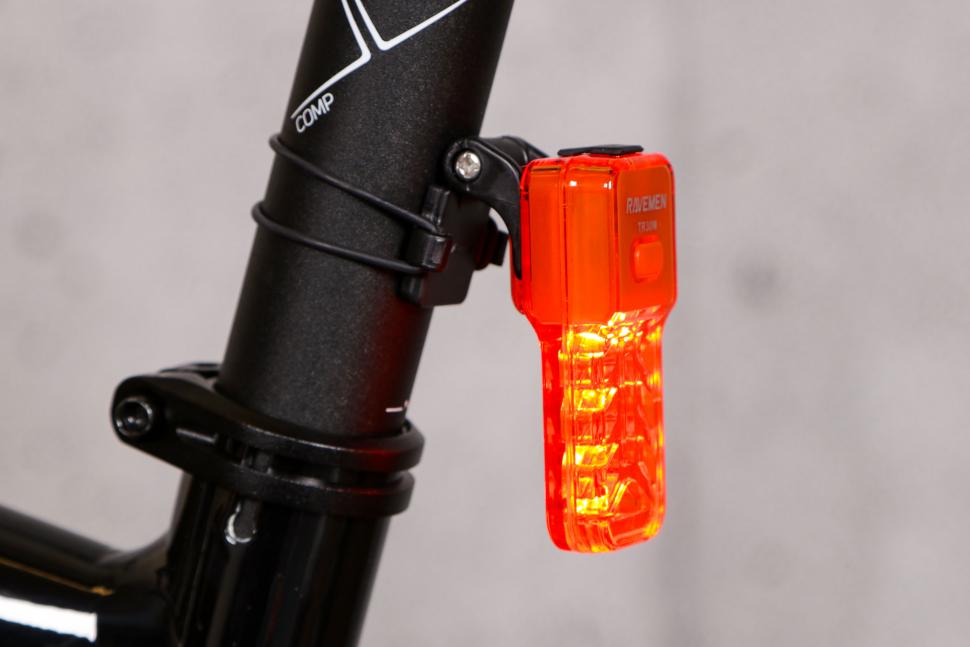

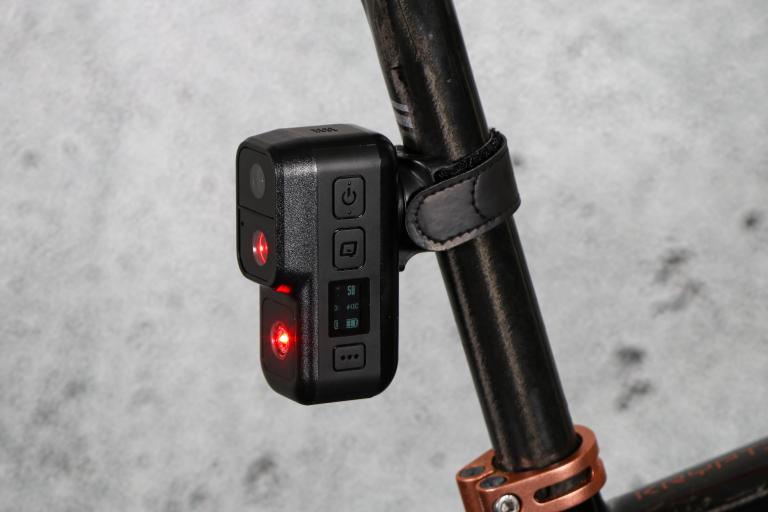
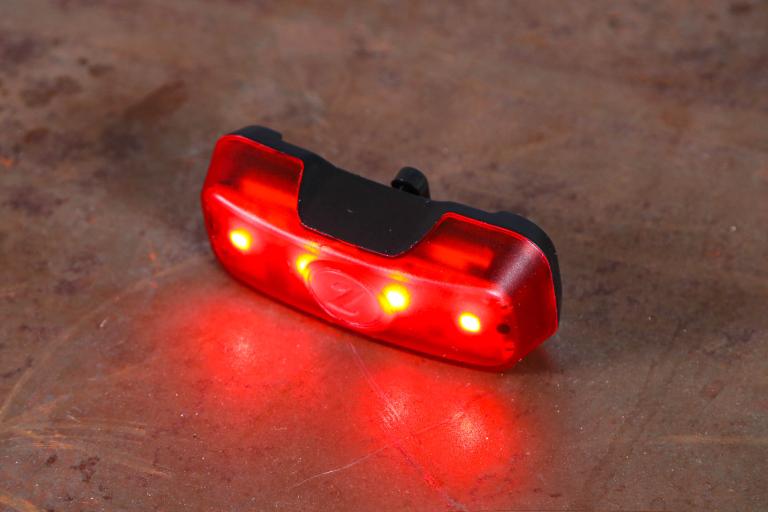
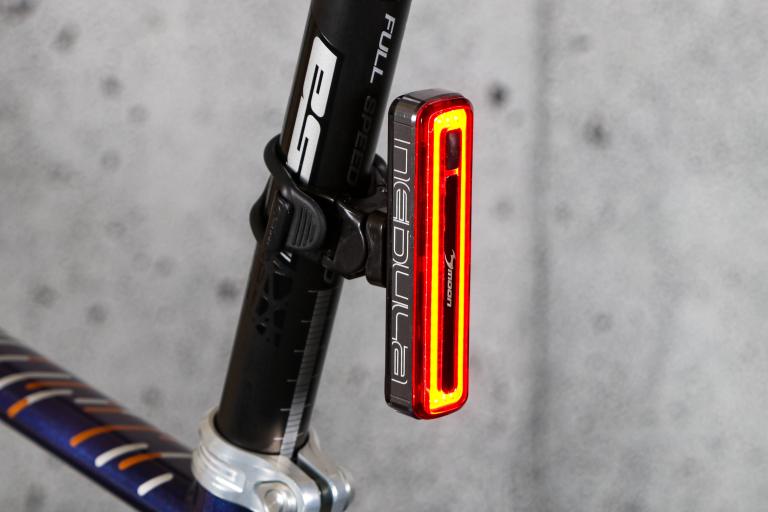
Add new comment
7 comments
Having the USB port at the top might make it less exposed, but you probably still want to push the rubber cover in better than in that jacket pocket picture...
Maybe something to do with:
"The TR30 hasn't missed a beat, despite the charge port's cover not being the best fit on our model."
Good call - with my post-vaccine head on, my attention didn't last until that far down the review.
Micro-USB aside. Im interested in one for my Road One backpack but not for £30.
Defo a market for multi-positional rear reds.
Have you considered the Moon Gemini? I really liked mine, very compact, excellent (ie tight!) clip. Unfortunately died after three years of moderate use
Micro usb. Really? It's 2021 now.
I found this comment from Outbound Lighting informative:
https://www.reddit.com/r/bicycling/comments/c7a6dx/comment/esg4fpx
I won't spend money on a micro-USB light either. These lights, they're just like inkjet printers, basically the same-old same-old relaunched somehow in order to get bumped in the reviews.
PS. Great review.